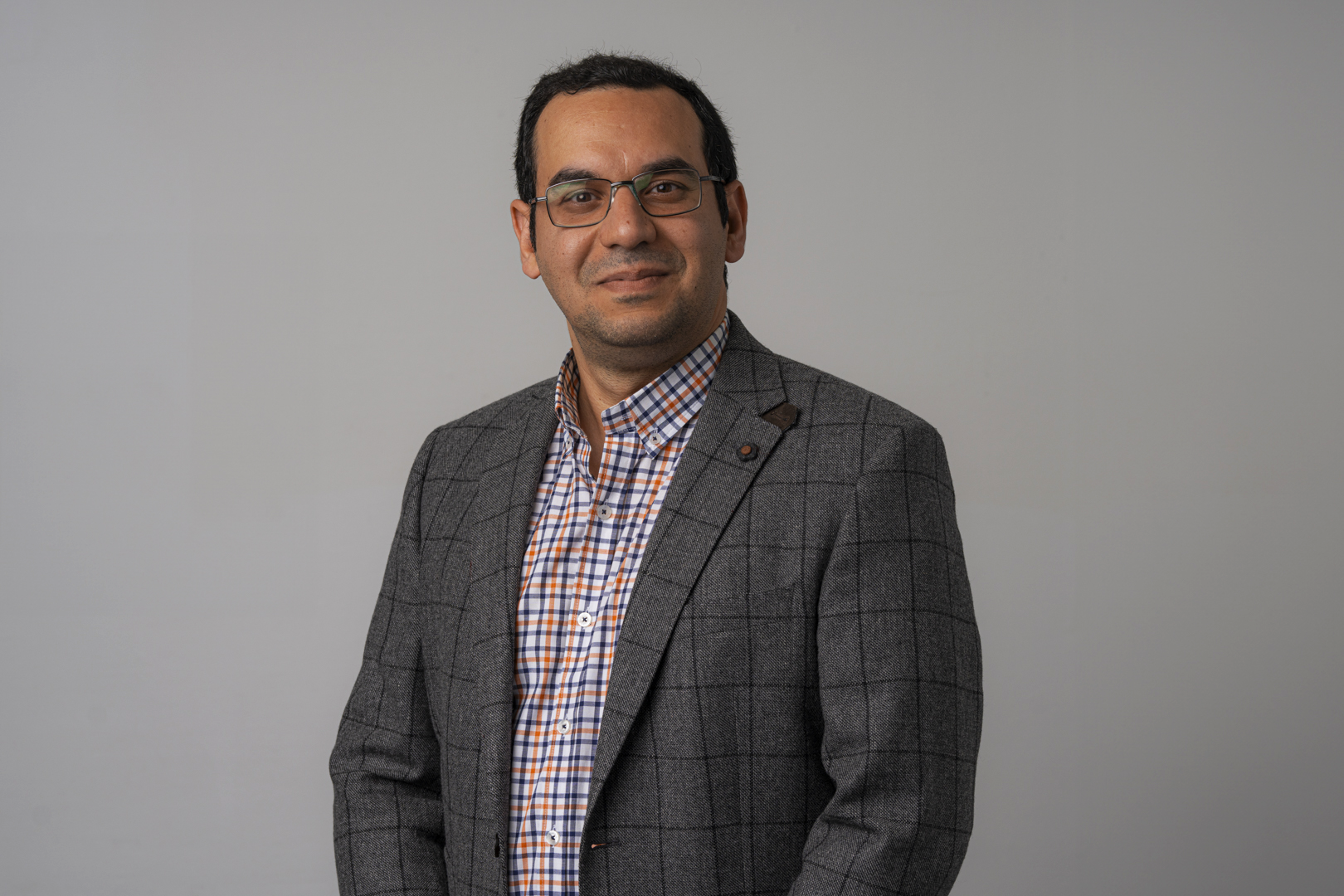Mohammad Hassan Khooban
Research leader

Project title
FiRÆ: Flexible Wireless-Power-Transfer CarpetBattery Charger
What is your project about?
The FiRÆ project is where creativity meets utility in the world of mobile robots — those clever autonomous helpers navigating everything from factory floors to your kitchen tiles. Imagine, if you will, a world where these robots never have to pause for a power nap; that is where we come in with our magic carpet ride. FiRÆ integrates advanced materials with a dash of AI wizardry to roll out carpet chargers that are not just smart but adaptable to various energy appetites and terrains. This is not just about juicing up robots but redefining their lifestyle - and possibly preparing them for a robot uprising. But seriously, our approach will shrink down those bulky circuits and give rise to charging systems that not only blend into your decor but also bring out the best in robotic autonomy and sustainability. Who said power cannot be both ingenious and invisible?
How did you become interested in your particular field of research?
My fascination with power electronics and robotics began during my university days, where I was captivated by the potential of technology to drive sustainable innovations. My earliest projects involved improving the efficiency of electronic circuits, and this experience was pivotal - it introduced me to the significant impact that advanced energy solutions could have on our environment and daily lives. This sparked a deep interest in wireless power transfer, an area rich with possibilities for transforming energy consumption patterns across various technologies. I saw in this field an exciting opportunity to eliminate the physical constraints of wired systems and to contribute to developing eco-friendly power solutions. This pursuit has not only aligned with my passion for technology but has also deepened my commitment to creating energy-efficient solutions that benefit both the environment and the technology sector.
What are the scientific challenges and perspectives in your project?
The FiRÆ project grapples with the intricate challenge of miniaturizing circuit elements to enhance the efficiency and reduce the size of wireless power transfer systems, a necessity for broader adoption. This endeavor demands an innovative departure from traditional designs, especially in optimizing a single coil for charging diverse robot batteries. Such advancements require integration of flexible design elements to adapt seamlessly across various environments - akin to how robotics has revolutionized autonomous systems. If successful, this project promises not only to advance the technical landscape but also to establish new benchmarks for the seamless and sustainable integration of robotic power systems into daily life, mirroring transformative strides seen in other sectors like autonomous driving.
What is your estimate of the impact, which your project may have to society in the long term?
The potential societal impact of the FiRÆ project is profound and multifaceted. By revolutionizing how we approach the charging of mobile robots through advanced wireless power transfer technology, this project stands to significantly enhance the operational efficiency and autonomy of robots in various sectors, from healthcare to industrial automation. The reduction in reliance on conventional charging methods not only decreases operational costs but also curtails energy waste, contributing to environmental sustainability. Moreover, by minimizing the footprint and environmental impact of electronic devices, FiRÆ aligns with global sustainability goals. In the long term, the adoption of such innovative technologies could lead to substantial energy savings and a reduction in electronic waste, providing a blueprint for future developments in green technology.
Which impact do you expect the Sapere Aude programme will have on your career as a researcher?
Receiving the Sapere Aude: DFF-Starting Grant is a milestone in my research career, marking a critical juncture where my past efforts in wireless power transfer and robotics converge with new opportunities for groundbreaking research. This prestigious award not only enhances my standing within the academic community but also provides the means to attract top-tier talent to my team. With the support of the Sapere Aude programme, I plan to undertake ambitious, high-impact projects that merge advanced engineering with artificial intelligence, aiming to redefine the efficiency and scope of mobile robotics. This opportunity will significantly bolster my ability to lead major international research initiatives and foster collaborations that stretch across continents. Ultimately, the insights and innovations generated through this grant are expected to elevate my profile, making me a strong contender for future major funding bodies, including European Research Council grants and other significant research awards. This trajectory is not just about advancing personal academic goals but also about contributing to a sustainable future, pushing the boundaries of what is technologically possible while mentoring the next generation of scientists in high-stakes, transformative research.
Background and personal life
While I love diving into research, I believe it is important to maintain a balanced life. Outside the lab, I am often found experimenting in the kitchen, cooking up dishes that might just rival my scientific experiments for creativity. Cooking is my break from the world of algorithms – unless you count the precise timing needed for a perfect dish. When I am not wielding kitchen utensils, I am likely at the piano, creating music, or immersed in computer games, strategizing and problem-solving in virtual worlds. Travel and nature hikes also recharge my batteries, inspiring new ideas. These activities are not just hobbies; they are vital for keeping my creativity and focus sharp, ensuring I bring fresh perspectives to my work.
View all research leaders here
Research institution
Aarhus University
Research field
Electrical Engineering
City of your current residence
Aarhus
High school
Taha (Shiraz, Iran)
